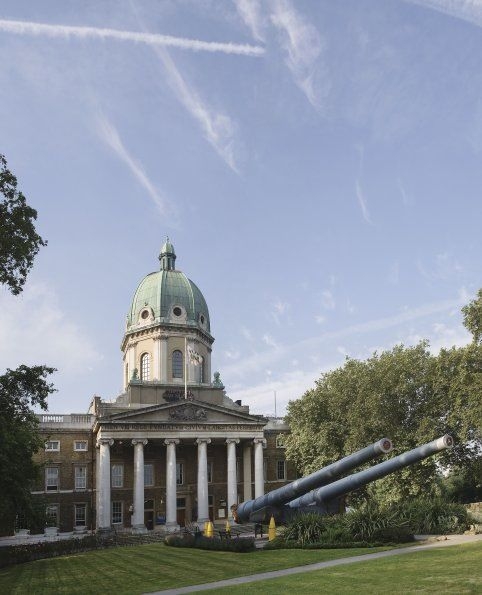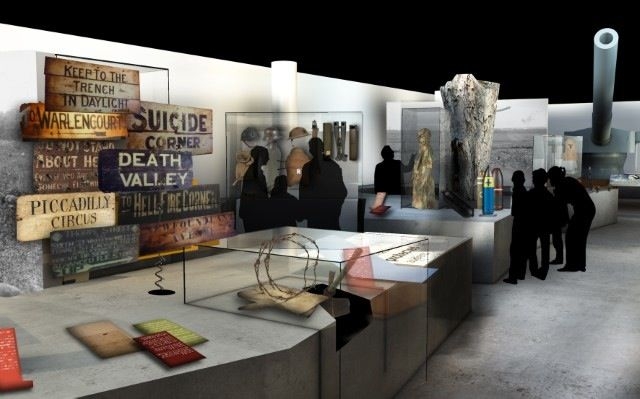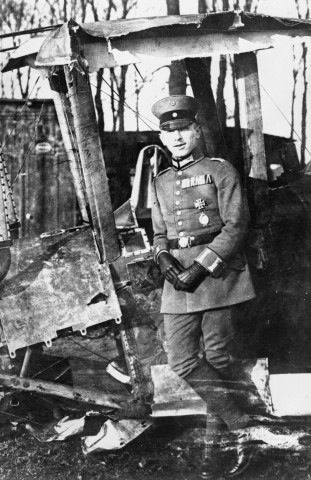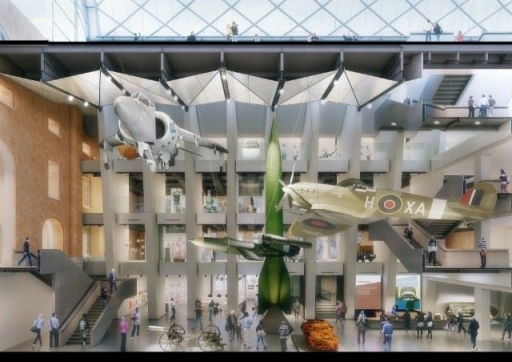A recreated First World War trench, complete with the sights and sounds of battle, will be one of the highlights of permanent new galleries being opened at the Imperial War Museum in London following a major redevelopment.
The famous museum will draw on its collections of 1,300 First World War objects including weapons, uniforms, diaries, letters and souvenirs which are said to be the the richest and most comprehensive in the world.
They will be on display in 14 chapters in the galleries alongside photographs, art and film which have remained hidden until now.
One of the highlights will be a recreated trench with a Sopwith Camel fighter plane swooping overhead and a Mark V tank looming above.
Trench visitors will be able to experience the sound of thunderstorms and gas attacks – as well as a kettle being boiled for a cup of tea as life in the trenches is made real. In other displays visitors will hear the sound of screaming shells and shrapnel.
The First World War galleries are part of a major £40 million development of the museum (below) including the transformation of the atrium. 
Diane Lees, Director-General of the IWM, said: “The Imperial War Museum was established while the First World War was still being fought to ensure that future generations would remember the toil and sacrifice of those who were impacted by it.
“These new galleries will allow audiences old and young to explore the First World War in great depth. They will experience the sights, smells and sounds of the recreated trench, see what life was like at the front with the Sopwith fighter plane and Mark V tank looming above, learn the terrible strain the war placed on people and communities and discover the role that women and children played on the home front.
“Visitors can consider some of the big questions and choices, ordinary and extraordinary, that people of Britain and its former Empire had to face in this first ‘total war’ and discuss the impact the conflict had on the world in which we live today.”
From 19th July 2014, visitors will be shown what life was like in Britain at the turn of the 20th century and the European rivalries which led to the war and meant Britain had to fight.
In Shock, visitors will hear the scream of shrapnel and shells they will come face to face with the French 75mm field gun, one of the new ‘quick-firing’ guns which contributed to the deaths of a million European men in just four months of fighting in 1914.
Christmas Truce
They will see objects on display for the first time from the Christmas Truce, including a button from a German tunic that was given to a British soldier as a souvenir, and discover how a state of deadlock ensued on the battlefields of the Western Front as soldiers sought refuge from the onslaught of artillery in trenches and dugouts.

Visual of a section within the new First World War Galleries © Casson Mann
A series of trench signs, such as those ‘to Hells corner’ and ‘Piccadilly Circus’ will show the complexity of these networks, alongside objects telling the stories of innovations in trench warfare; from a catapult for hurling grenades, the geophones used in mines beneath the trenches to detect the enemy, through to a hollowed out fake tree which became a camouflage look out in no man’s land.
Your Country Needs You
Drawing on IWM’s rich poster collection, Your Country Needs You will focus on recruitment and propaganda, with the initial calls to join Field Marshal Kitchener’s Army, and how Kitchener soon became a celebrity with objects such as a Kitchener doll, letters from adoring fans asking to marry him, and a letter from nine-year-old Alfie Knight pleading to allow him to enlist as he “can ride jolley quick on my bicycle and…am a good shot with a revolver.”
In World War large interactive maps portray Germany’s global strategy and Britain’s attempts to counter it, by launching campaigns in the Middle East and Africa and, above all, the Gallipoli campaign.
Pig mascot
Walking around a naval gun from HMS Chester, visitors will learn about Jack Cornwell VC who at the age of 16 courageously manned the gun in the Battle of Jutland, through to Tirpitz, a pig that was saved from the sea after the German ship SMS Dresden sank off the coast of Chile and later became a mascot on board HMS Glasgow.
The Supply Line, an interactive table over 4 metres long in Feeding the Front, will show the unprecedented scale of production required on the home front to keep the troops fed and fighting. Visitors will be required to help make shells, food and boots to be sent to the front, through large, digital animations.
Somme
At the centre of the Galleries with the towering 9.2 inch howitzer gun ‘Mother’ on display, Total War will explore the Battle of the Somme, the costly campaign that started in July 1916 and continued for a gruelling five months, marking a pivotal point in the war.
The scale of casualties in this battle will be represented through a map that had a cross marked on it to represent each of the graves dug, alongside a Union Jack used by a chaplain to conduct burials on the Somme.
Visitors will also be able to watch the original 1916 documentary film of the battle – now UNESCO listed. Seen by over 20 million people at the time, half the population of Britain, it is shown for the first time with the original musical accompaniment.
Opium
Life at the Front will look at the reality of what life was like for the troops in and behind the trenches including the kit they were issued, the extra kit their families sent out such as medical supplies including cocaine and opium, what they ate, recreational activities such as plays, vegetable shows and sports days, and the souvenirs they would collect such as a scrap of wallpaper taken from a German trench. Visitors will then be led into the recreated trench.
Home front
On the home front, At all costs explores how the fervour to win the war grew in Britain, and how it penetrated every level of British society, infiltrating the lives of everyone. The role of women is explored through uniforms, photos and the life stories of those who stepped into roles in the factories, hospitals, transport and agriculture industries.
The area also describes how children were not spared from the efforts. A jumper which belonged to a Sea Scout tells the story of their observation role along the coast.
Visitors will learn how British civilians came under enemy air attack, how artillery came to be fired on the streets of Dublin in the Easter rising, and Germany’s fateful decision to launch a campaign of unrestricted submarine warfare which ultimately brought the USA into the war on the side of the Allies.
Red Baron
In 1917 as the war raged on with setbacks and deadlocks, visitors can discover the tactics and technological developments that ensued, in Machines against Men.
The area will feature the stories of two famous air aces, British Major James McCudden VC and the German ‘Red Baron’, Manfred von Richtofen. Fragments from the planes in which they met their deaths will be on display.

Leutnant Max Immelmann poses next to the wreckage of one of his 15 aerial victories, a Royal Flying Corps BE 2C. Copyright of Joseph Nieto. IWM (Q58026)
Passchendaele 1917
Before focusing on the Battle of Passchendaele, and its infamous mud, visitors will see how the efforts of photographers and war artists to record the shattered landscapes of the Western Front created an indelible impression of what the war looked like. For example Paul Nash’s famous work, Menin Road will be on display.The display will look at how animals were used for communication, with a dog collar which carried messages between troops as well as a pigeon message book.
Siegfried Sassoon
Through objects such as Siegfried Sassoon’s letter protesting against the continuation of war, the terrible strains that people endured both on the fighting and home fronts will be explored, and also how German submarine attacks led to rationing in Britain, while the British naval blockade meant hunger, even starvation for Germany and its allies. The severe lack of resources will be depicted through collection items such as clothes made of paper and wooden soled shoes.
Seizing Victory will tell the dramatic story of 1918, where visitors will see how after almost another year of war, from near defeat, Allied forces were able to claim victory.
The Galleries will then culminate in War Without End, showing how the conflict changed the world forever, from the enormous human cost, to the new world order that emerged, the indelible changes which the war had on British society and the Empire, through to the commemoration and remembrance as people looked back ten years after the war.
Information and pictures from Imperial War Museum
Posted by Mike Swain, Centenary News
